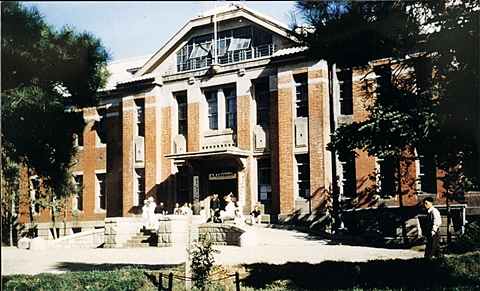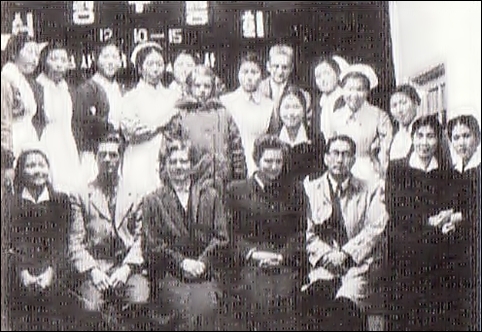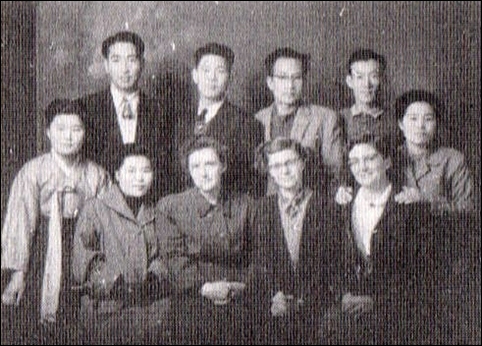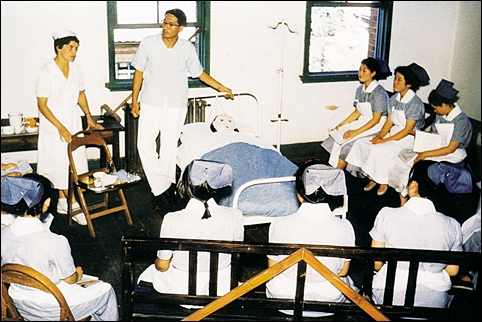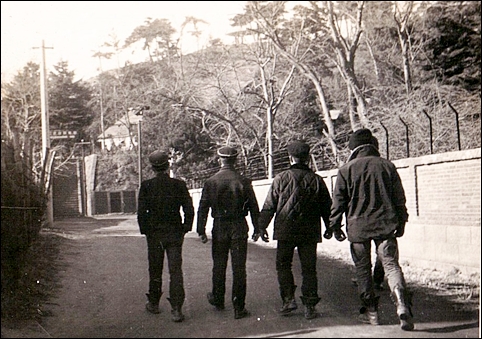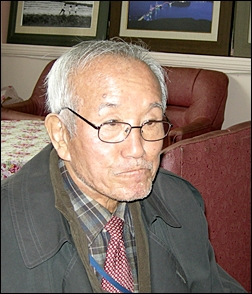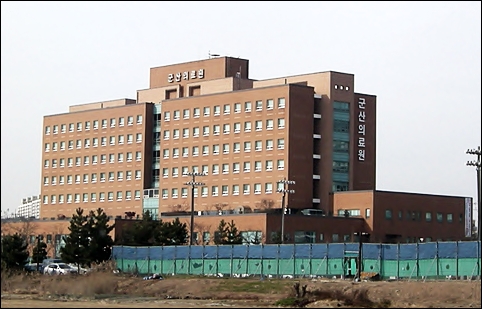[117호] 서클 이야기 : 서클 대화 진행의 증언과 그 비전 2 | 박성용
훈련원
조회 수 161 추천 수 1 댓글 1
peace_circle.jpg
서클 대화 진행의 증언과 그 비전 2
박성용 / 비폭력평화물결 대표
1. 서클의 조우와 토대 구축기- 2005년~2009년: AVP/HIPP, 그리고 서클 프로세스
각각의 서클 모델이라는 시냇물들이 2020년 현재 하나의 흐름으로 되기까지 한국에서 경험한 서클의 기원을 되돌아가 보면 그 각각에 약간의 관심과 문제의식 그리고 작은 만남의 사건들이 존재한다. 그때는 미래가 어떻게 펼쳐질지는 몰랐던 우연적인 조우로 혹은 작은 움직임의 시작으로 여겨진 것들이었다. 목격자이자 비폭력활동가가 된 지금의 나도 그 당시엔 하나의 작은 꿈이나 바램이어서 실재(reality)가 되는 미래에 대해 정확히 무엇이 될지는 몰랐다. 또한 그 작은 실마리의 꿈 이상으로 내 개인의 삶과 단체의 내부외부상황이 모호하고 생존의 비안전성으로 인해 잔뜩 구름이 많이 낀 개인과 단체의 상황이었기 때문이기도 하다.
10년간의 해외 유학 말기인 2001년 마지막 학기에 9.11사태를 퀘이커 펜들힐에서 가을학기를 보내면서, 그간 유학 외에 미통일운동의 단체인 <자주연합>의 지역활동가로 있었던 나는 퀘이커교도이자 함석헌의 제자였던 해외통일운동의 산 증언자인 이행우 선생님의 도움으로 등록비 없이 펜들힐 센터에서 거주하게 되었다. 9.11사태를 퀘이커교도들이 어떻게 비폭력직접행동과 비폭력 증언활동(witness movement)을 하는지 목격하고, 거기서 1주일에 한 번씩 하는 서클 대화모임을 참관하게 되었다. 이행우 선생과 이미 펜들힐에 왔다 간 정지석 박사와의 인연으로 한국에 오면서 박사과정 마무리가 필요한 정지석 박사가 있던 유네스코/아시아태평양국제이해교육원의 시민사회 실장 자리를 2002년부터 3년간 이어 받게 되었다.
2003년인가 그다음 해에 학술진흥재단의 아시아종교분쟁과 평화프로젝트 2년 연구 사업차 필리핀 민다나오에 가서 거기서 3주간의 평화훈련과정에 참여한 한국의 참여자 10여 명 중에 통역자 겸 와있는 이재영(당시, 한국아나뱁티스트소장) 소장과 박수선 선생(평화여성회)외 몇몇이 필리핀의 평화운동을 배우면서 지금의 가해자피해자대화모임에 대한 2년간의 훈련과정에 있었던 것을 우연한 만남으로 알게 되었다. 이 우연한 만남은 2005년 초에 아태교육원을 그만두고 5월부터 비폭력평화물결의 공동대표로 옮아가면서 예기치 않은 필연적인 네트워크 활동으로 지금까지 동료로서 몇몇 개인 활동가와 단체들의 연대라는 인연을 맺게 된다. 그리고 민다나오에서 2년차 학진연구관련 필리핀원주민 방문을 통해 현주민의 서클형 대화의 충격을 받았지만, 펜들힐과 필리핀 원주민의 대화방식이 서클진행방식에 의한 차이라는 것을 의식적으로 깨달은 것은 비폭력 실천의 전략에 대한 몇 년 후의 성찰과 자각을 통한 일이다.
비폭력 실천의 방식 중 사회변화(social change)라는 입장에서 분단조국의 현실에서 당장 내게 다가온 활동은 ‘7.27한강하구평화의배띄우기’라는 약 천여 명의 연인원이 몇 년 동안 지속된 사업이다. 이 운동을 DMZ분단선없는 한강하구에서 유엔사를 괴롭히고 시민의 평화연대를 각성시키는 비폭력직접행동의 운동을 김포, 강화, 인천, 서울, 일산의 5개 도시 시민사회단체들과 종교기관들로 이루어진 10여 개의 단체연합운동이 내가 오기 전년도부터 4년간 전개되었다. 비폭력평화물결은 퀘이커교도인 미국의 비폭력세력단체(NPI, nonviolent peaceforce international)의 데이비드 핫소대표가 그간 미국에 3년간 방문하며 퀘이커교도로 바뀌어져 돌아온 민중신학자 박성준 공동대표가 몇몇 동료와 이미 2002년 북미전쟁 가능성 앞에서 ‘인간방패’라는 방식의 비폭력직접행동의 방식으로 인간안보를 꿈꾸며 만들었다. 이미 박성준 선생은 단체 내에서 개인적으로 ‘움직이는 평화’라는 방식으로 퀘이커의 영향을 받아 토킹피스로 하는 참여형 서클대화방식을 전개하고 있었지만 그것은 단체 내에서 다른 실무자들에게 공유된 것은 아니었다.
네트워크의 방식과 이로 인한 네트워크 리더십을 세우는 방식이 자연스럽게 익숙해진 것은 -이는 물론 나에게도 처음부터 익숙한 방식은 아니었다. 상황이 나를 그쪽으로 몰아갔던 것이다- 그 당시 평화활동가 연차대회를 3년간 준비하고 운영하며 10여 개 평화단체들과의 인연과 그 평화활동가 연차대회를 통해 알게 된 기독교 평화훈련단체들 -개척자, 한국아나뱁티스트 센터, 평화여성회 등- 그리고 기타 여러 평화운동단체들과의 연대모임꾸리기를 통해 나온 실무적 정황에 의한 것이다. 참여, 같이 숙고하기, 의사결정의 진통 과정을 경험하기, 새로운 기획을 위한 분담, 홍보와 실행 등의 방식을 통해 몇 가지 기획들이 이루어 졌다. 공동대표에서 대표로 위치전환 후부터 한강하구배띄우기 이외에 평화활동가연차대회 만이 아니라 4 훈련단체들과의 기독교평화아카데미, 그리고 여러 단체들과 더불어 요한 갈퉁(평화학자 요한갈퉁은 NPI의 일본지부인 일본비폭력평화세력단체[NPJ]의 교코 대표와의 인연으로 초대되었다)의 TRANSCEND 모델의 훈련워크숍 진행 등이 펼쳐졌다. 이러한 연대단체들과의 훈련워크숍 및 연대활동의 핵심동기는 평화활동가의 지침과 임파워먼트 그리고 상호지원의 필요성에 대한 인식에서 나왔고, 내가 소속한 단체는 평화운동이라는 전선운동을 지원하는 공급책으로서의 훈련과정과 훈련매뉴얼의 중요성을 깨달았기 때문이다.
이미 서클에 대한 자각 없는 사전 경험 -펜들힐, 필리핀 민다나오-에도 불구하고, 그리고 평화단체들과의 과정을 만들어 초대, 참여, 숙의, 결정, 나아가기라는 무의식적인 동아리진행원리를 실무와 네트워크사업에서 진행하고 있었지만, 서클을 의식하고 훈련과정으로 만나는 것은 2006년 대전의 퀘이커교도인 이종희 선생이 독일생활 30년을 접고 한국에 들어와 때마침 독일 친구이자 AVP 진행자인 우테 카스퍼스의 방한과 AVP의 소개워크숍에 대한 제안을 받고서 이다. 나는 당시 이종희 선생 개인도 AVP도 무엇인지 알지 못했지만 독일 퀘이커단체의 재정지원과 AVP(Alternatives to Violence Project; ‘삶을 변혁시키는 평화훈련’으로 한국에서는 소개되고 있음)의 성격에 대해 듣고서 의심 없이 흔쾌히 2007년 4월에 10개 단체들의 동의를 얻어 첫 공개워크숍과 1일 맛보기 워크숍을 열어 참여자 40여 명의 전원의 동의로써 이 워크숍이 우리 평화활동가들에게 필요한 모델이고 향후 한국에서 진행되기를 바라는 결정을 얻게 되었다.
원래 재소자 임파워먼트 훈련 프로그램 진행과 그것의 가치를 일상에서 실현하는 AVP진행자커뮤니티형성(55개 국가에서 진행)을 위해 한국에서 시작된 AVP는 청소년훈련과 학교에서의 교사의 지원을 위해 본 단체의 사업으로 AVP와 연관된 모델인 HIPP(Help Increase Peace Program; 한국에서는 ‘청소년평화지킴이’로 소개됨)의 가능성을 2007년부터 산돌학교 등을 통해 확인하며 한국의 학교상황에 대한 적응을 모색하게 되었다(HIPP의 본격적인 진행자과정은 2009년부터 광명에서 광명교육연대와 네트워크 사업으로 첫 시작을 하게 된다.).
서클은 간단하지만 의식의 깊이에 자리 잡기까지에는 원래 낯선 문화와 진행방식이어서 이것을 본격적으로 만나는 작업은 서클 프로세스에 대한 삼선재단의 지원에 의한 연구에 의한 결과이다. 이는 2000년 하반기에 사회감수성학습(SEL; Social & Emotional Learning)의 2년간의 연구 그리고 이후 평화감수성 훈련의 AVP의 긍정적인 영향 하에 서클 자체에 대한 이론적인 연구인 서클 프로세스에 대한 연구가 시작되었다. 이러한 움직임은 서클의 적용 가능성에 대한 긍정성을 갖게 되었고, 확신에는 불충분하지만 이제 서서히 서클로 하는 대화진행방식에 대한 이 연구와 AVP/HIPP의 경험을 통해서이다.
서클 프로세스에 대해 의식적으로 단체 내에서 밖으로 소개할 필요성을 지닌 도화선은 2008년 이명박 정부의 쇠고기 파동으로 인한 열심히 활동하던 한 촛불집회단체의 내부갈등에 대해 간단한 서클진행 대화방식의 도입부터가 시작점-아마도 2009년-이 된다(참고로 이명박 정부 시절에 촛불집회 이후 평화통일단체들은 서서히 사라지게 된다. 특히 통일단체들의 보이지 않는 굿바이의 현실이 너무 컸다. 이 시절에 통일단체는 1/3로 축소되어 명망가 높은 대표가 있는 단체를 제외하고는 다 사라졌다.) 안전한 공간, 초대, 참여, 돌아가는 리더십, 센터피스와 토킹피스 등에 관한 서클개념들이 대화진행의 작동원리로 정착되기 시작한 것이다. 흥미로운 관찰은 기독교평화아카데미 3년간의 네트워크형 평화훈련 과정에 있어 소수의 참여자가 모여 어렵게 훈련과정을 진행하여 의미 있는 활동가를 키워냈지만, AVP/HIPP 그리고 서클 프로세스 등은 일반 대중의 손쉬운 서클에 대한 흥미와 관심을 불러내었고, 적지 않은 사람들이 자연스러운 경로로 서클 진행자로 서게 되었다는 점이다. AVP, HIPP를 만나서 혹은 단체 내부의 평화교육팀의 활동을 통해 서클을 만남을 통해 진행자로 활동가로 서는 일들이 매우 높아졌다는 새로운 가능성을 현장에서 보게 된 것이다. 서클이 기존의 활동가에게 신념과 열정을 강화시키거나 일반인에게 동기부여와 새로운 활동가로 서게 하는 확률이 높아지면서 이에 대한 자연스러운 집중과 헌신이 나와 소속단체의 미션으로 다가오게 되었다.
비폭력평화물결에서 활동하던 초기 2005-2009년간은 유네스코·아태교육원이 시민사회 실장직에서 얻은 국내 평화단체들과의 연결, 그리고 평화의 배 띄우기, 평화활동가연차대회, AVP 등의 네트워크 사업 등을 통해 나와 소속단체의 자기 정체성과 방향 재정 위의 기간이자 서클이 단체에 수육(incarnate)이 되는 초기 시기였다. 이에 대해 다른 두 사건이 신념에 대한 전환을 준 것이 있었다. 그것은 2008년 촛불집회 이후 서클 프로세스의 중요성만 아니라 단체가 박성준 공동대표의 리더십이 떠난 단체 내 회원 활동 급격한 감소와 이명박 정권의 촛불단체들에 대한 집중적인 고사 작전을 통해 평화통일단체들이 사라지거나 어려움에 부닥쳐 2009년부터는 본 단체의 존재 가능성이 불투명해지기 시작한 시점이라는 것이다.
그러한 불길한 징조 앞에서 2008년 촛불집회가 본격적으로 시작되기 바로 직전에 4월에 13개 단체들의 네트워크를 통해 조지 레이키의 비폭력직접교육(nonviolent direct education)워크숍 4박 5일을 치렀고, 2008년 가을부터 네트워크 사업으로 준비하여 2009년 가을까지 진행된 비폭력세계행진이라는 칠레에서 시작하여 북미 유럽 그리고 아시아를 거쳐 다시 남미로 가는 국제연대 활동을 치렀다. 이 두 사업을 통해 내가 배운 것은 생존의 위협에 대한 두려움과 결핍에 대해 전혀 다른 관점을 얻었다는 점이다. 단체 내 전직 공동대표로 인해 모여든 후원자들의 떠남과 단체의 활동위축과 외부의 이명박 정권의 평화통일단체의 지원사업 중단의 시작이 주는 부정적인 충격이 서서히 몰려오고 있는 상황에서 조지 레이키의 민중의 지혜와 열성을 끌어내는 방식과 비폭력 행동의 다른 방식으로서 사회 방어(social defense)와 제3자개입(TPNI; third party's nonviolent intervention)에 대한 이론적 이해를 처음 접했고, 20여 단체들과 아무런 재정 없이 시작된 <세계비폭력행진>의 국제연대를 무사히 치러 내면서 자원과 재정의 결핍의 시작에도 불구하고 활동의 풍성함이라는 결과를 가져오게 만드는 민중에 대한 의존과 과정의 형성단계에 대한 중요성을 처음으로 이해하거나 그 중요성의 씨앗을 가슴에 품게 된 것이었다. 네트워크는 매우 중요한 ‘자원(resources)’이었고, 돌파를 위한 힘이 되었으며, 이들을 결합하는 '진정성 있는 문제의식'의 공유야말로 이들을 서로 끌어당기고 앞으로 가게 만들게 하는 원동력이 된다는 확신을 알아차리게 된 것이다. 그리고 그 확신은 단순히 신념으로 표출되는 것이 아니라 정교한 훈련이나 과정적 수단을 통해 발휘된다는 직접교육론(pedagogy of direct education)을 이해하게 되었다.
나는 비폭력대행진의 네트워크 사업이 끝나자마자 비폭력 훈련에 대해 집중하고자 하는 동기에서 그간 알고 있었던 한국 NBC 센터의 캐서린 한 대표와 회복적 정의운동의 흐름에 대해 그동안 계속 들려주었던 이재영 소장을 2009년 11월 29일 보증금을 까먹어가며 버티고 있던 우리 단체의 가장 가난했던 공간인 서대문 영천시장의 2층의 사무실에 초대해서 모임을 갖게 되었다. 그 역사적 모임이 바로 ‘회복적정의시민사회단체네트워크’의 출발이다. 그동안 각자 자신의 영역에서 무엇이 새롭게 징조로 펼쳐지는 지를 공유하고, 훈련기관의 공통의 특성을 통해 무엇이 가능한지 협력하는 것에 대해 이야기를 나눈 것이다. 그래서 나는 이재영 선생의 그간의 회복적 정의 운동의 공헌에 눈여겨보아 왔고, NVC의 시민사회에서의 대화 운동의 가능성 그리고 AVP와 HIPP가 갖는 재소자들과 청소년들에게 줄 수 있는 갈등과 폭력에 대한 임파워먼트 훈련에 대한 각각의 모델이 결합하고 하나로 묶을 수 있는 연대사업으로서 ‘회복적 정의’에 대한 공동의 사업추진을 확인한 첫 모임이 되었다. 그리고 2010년부터 평화여성회 내 갈등해결센터의 박수선 대표 등의 몇 단체들(광명교육연대, 나중에는 좋은교사운동 등)을 더 초대하여 본격적으로 ‘회복적정의시민사회네트워크’라는 공식명칭을 사용하게 되었고 향후 여러 일들이 펼쳐져 나가는 시원적 토대가 마련되었다. 이는 허공에 갑자기 만들어진 것이 아니다. 그동안의 여러 활동사업을 통한 신뢰와 우정에 의한 관계망이 형성되면서 나온 자연스러운 결과이다. 각자의 진실이 서로 엮여서(weaving) 새롭게 출범된 모임이고, 나는 이것이 각자의 작은 진정성으로 출발했지만 이 모임이 향후 중대한 변화를 일으킬 줄은 그 당시에는 꿈에도 예측하지 못하였다.
Prev [117호] 순례의 길 생명의 길 54 : 귀농운동과 만나다! (4) | 차흥도[117호] 제주에서 불어온 향기 : 당근 밭에서 | 유지은 Next

